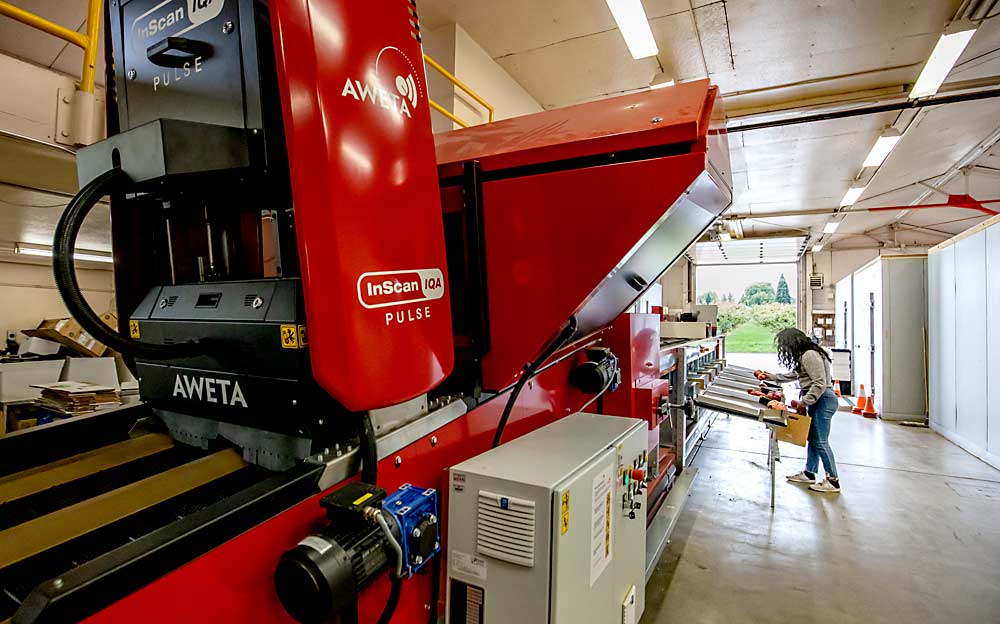
When it comes to fruit sorting, Washington State University has entered the modern era, thanks to industry funding and private donations that supported the purchase of a state-of-the-art optical sorting line.
After just a few months up and running, researchers at the Tree Fruit Research and Extension Center in Wenatchee say the new sorter makes collecting fruit quality data from experiments much faster.
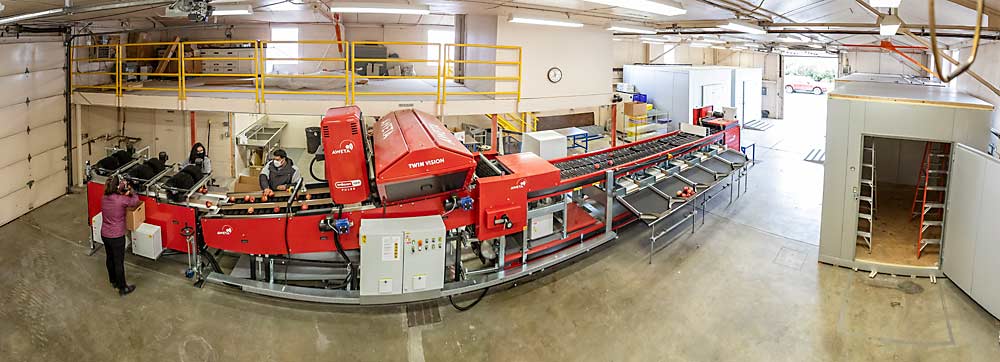
“We really are interested in doing sorting with a commercial-type machine, using the latest spectral imaging technology to sort by weight, color, external defect and the hyperspectral imagery to look at internal characteristics such as soluble solids and defects such as rot,” said Carolina Torres, the endowed chair for postharvest physiology. “We’re saving money on people, we’re replicating what the industry is doing and we are handling bigger trials.”
Funded by the tree fruit industry endowment and a $250,000 donation from Northwest Farm Credit Services, the new Aweta sorting line replaces a decades-old packing line that had largely been retired for years, she added. In addition, industry funding covered construction of five new cold storage rooms, several of which will soon be outfitted with controlled atmosphere capabilities.
“The endowment really makes this possible,” said Chad Kruger, director of the research and extension center. “Institutionally, we haven’t had big money for facilities in a long time. We also don’t have little money for facilities. Like $20,000 or $50,000 for a new piece of equipment is just not in the budget, so year in and year out, money from the endowment is helping us make progress on these needs.”
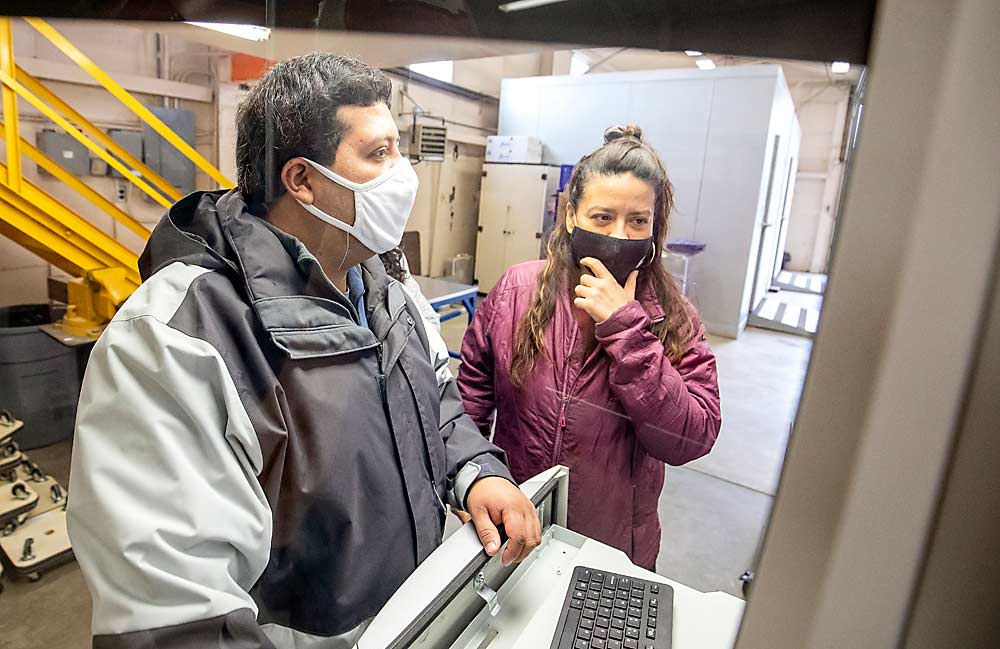
In a long-ranging planning process several years ago, the center considered expanding the postharvest processing lab to fit a full packing line, but the funding for such an expansion was not available, Kruger said. With resources from the endowment, the center now plans to finish another cold storage room and upgrade some of the older storage capacity.
“That will largely get us to where we need to be on fruit handling infrastructure,” he said. “The next thing we need to prioritize for infrastructure development is orchard irrigation management and plant growth facilities.”
So far, the sorting line has run fruit for WA 38 trials and for several of physiologist Lee Kalcsits’ fruit quality experiments. Torres said she’ll be using it throughout the year to study a variety of postharvest disorders. Eventually, the research programs run by physiologist Stefano Musacchi and pathologist Achour Amiri will also utilize the optical sorting line, Kruger said.
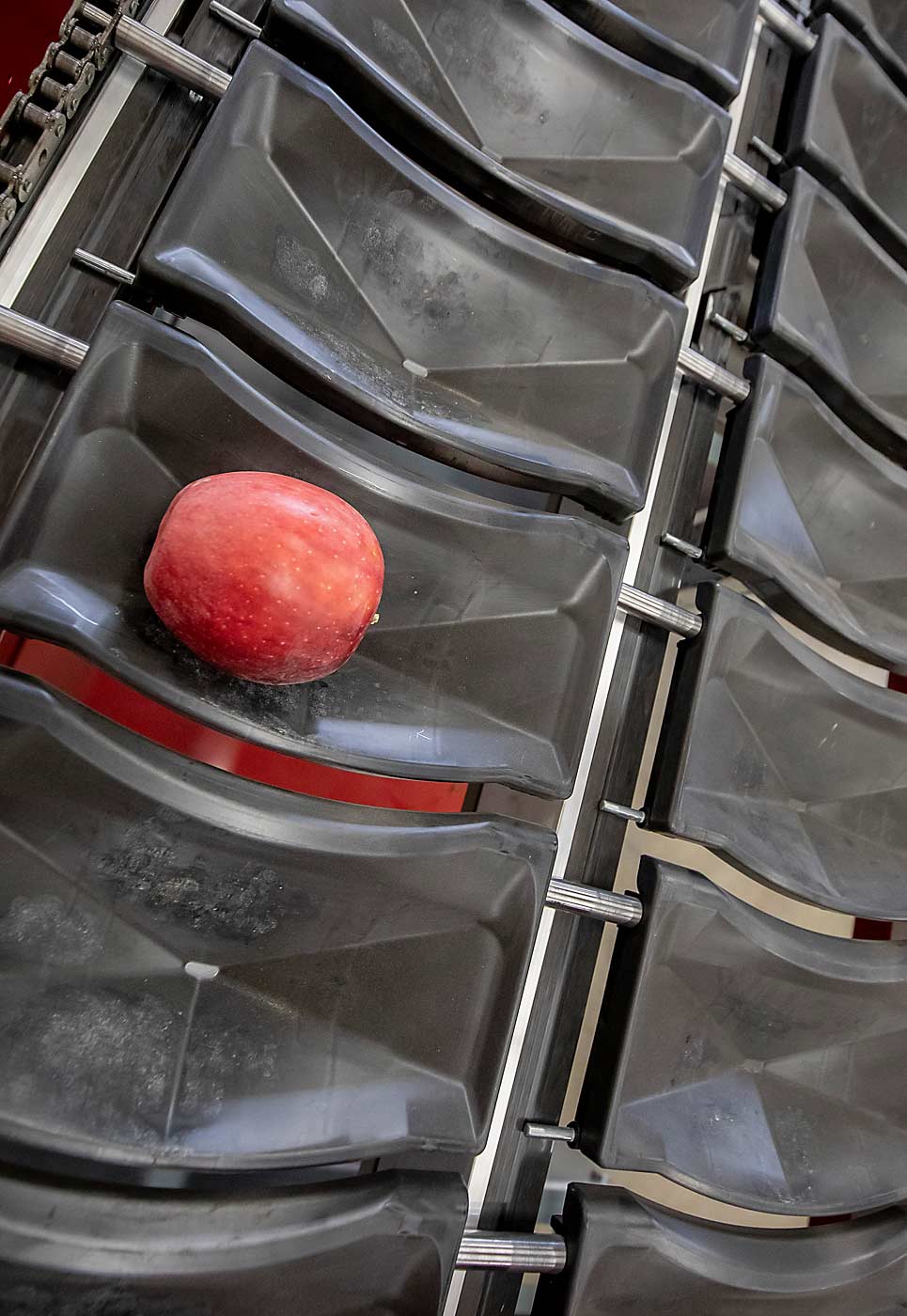
The line can handle apples and pears, Torres said, thanks to the unique design of the cups that position and rotate fruit for imaging. Just like any commercial packer with a new optical sorter, it takes time for the machine learning to calibrate its defect guide so that it can reliably sort fruit, she said.
After just a few months of operations, the new system is performing well at collecting data on fruit size, diameter, external color, background color, bitter pit incidence, bitter pit area and sunburn area, Torres said. Those are all important to a wide variety of research projects and important to packers, so the manufacturer, Aweta, had defect detection models ready.
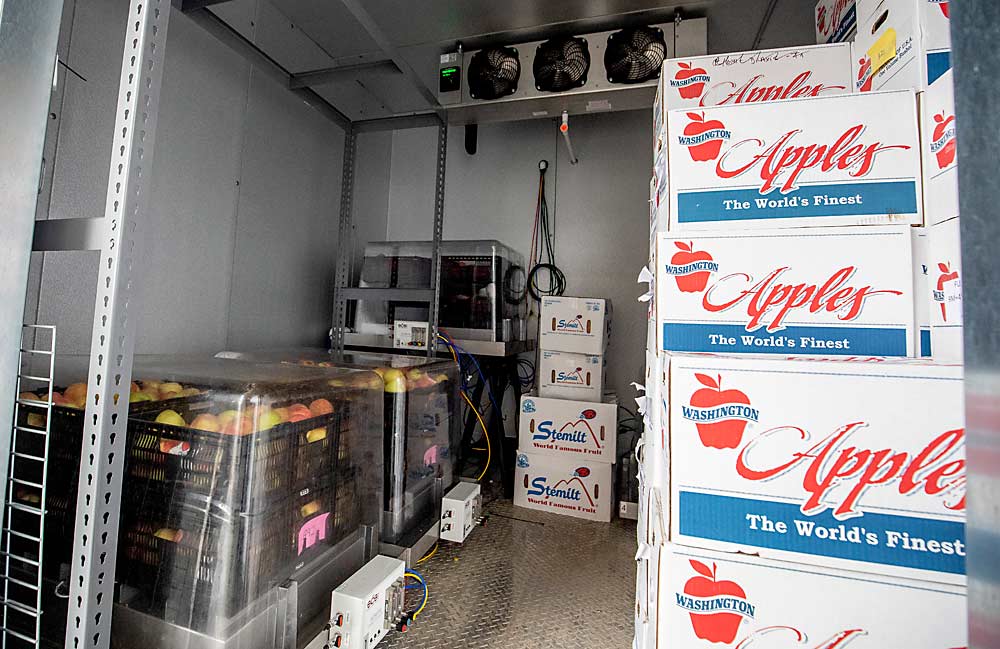
But researchers at WSU are also interested in emerging metrics, such as soluble solids and dry matter, for which there is not yet commercial demand. Luckily, Aweta agreed to develop models so that the optical sorting system can learn to assess those as well, Torres said.
“At the end of the day, this is really about innovation,” Torres said. “They are willing to work with us on dry matter, I’m just giving you an example, because it could turn out to be really important, and it could be a selling point for them in the future.” •
—by Kate Prengaman






Leave A Comment